Leipzig is a stunning university city with a rich music history, a beautiful Old Town, and lots to see. Here are the best things to do in Leipzig, Germany!
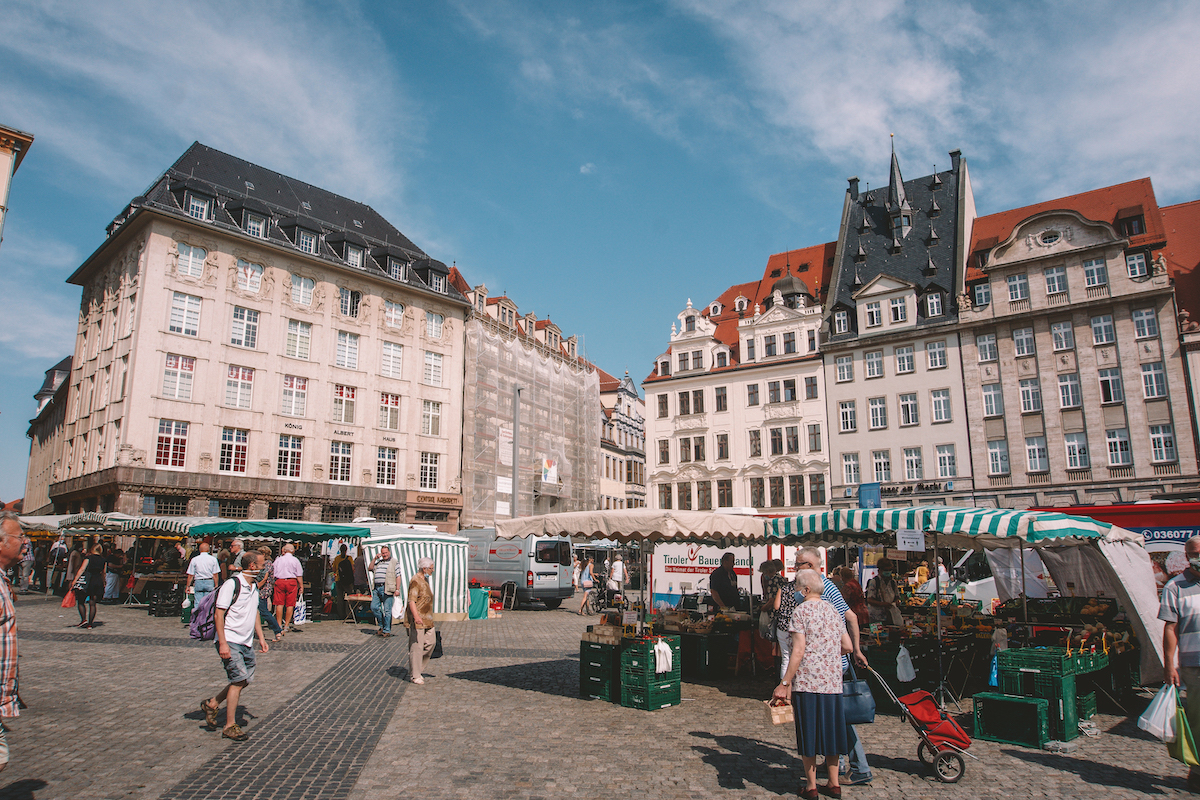
Once dubbed “Little Paris” by German writer Johann Wolfgang von Goethe, Leipzig is now often referred to as “Little Berlin.” It’s the largest city in Saxony, and its proximity to Berlin makes it a popular day trip for visitors from the capital city. Although Leipzig has been compared to Paris and Berlin before, the city has its own unique culture that makes it stand out in its own right!
One of Leipzig’s biggest claims to fame is its rich musical history. Composer Richard Wagner was born in Leipzig, and other beloved musicians and composers such as Johann Sebastian Bach, Felix Mendelssohn Bartholdy, and the Schumanns lived here.
Leipzig was also the site of the 1989 Peaceful Revolution, where 70,000 people came together to protest the policies of the East German Government.
Today Leipzig is a thriving university city with lots to see and do. Whether you’re interested in Leipzig’s musical roots, its art scene, its Cold War history — or just want to visit a really unique city in Germany, Leipzig has something for everyone! Here are the top things to do in Leipzig, in no particular order.
Table of Contents
Click “show” to see the full table of contents for this post. You can jump around the post as desired by clicking on the individual sections listed below.
Map of Leipzig’s Must-See Attractions
Take a Walking Tour
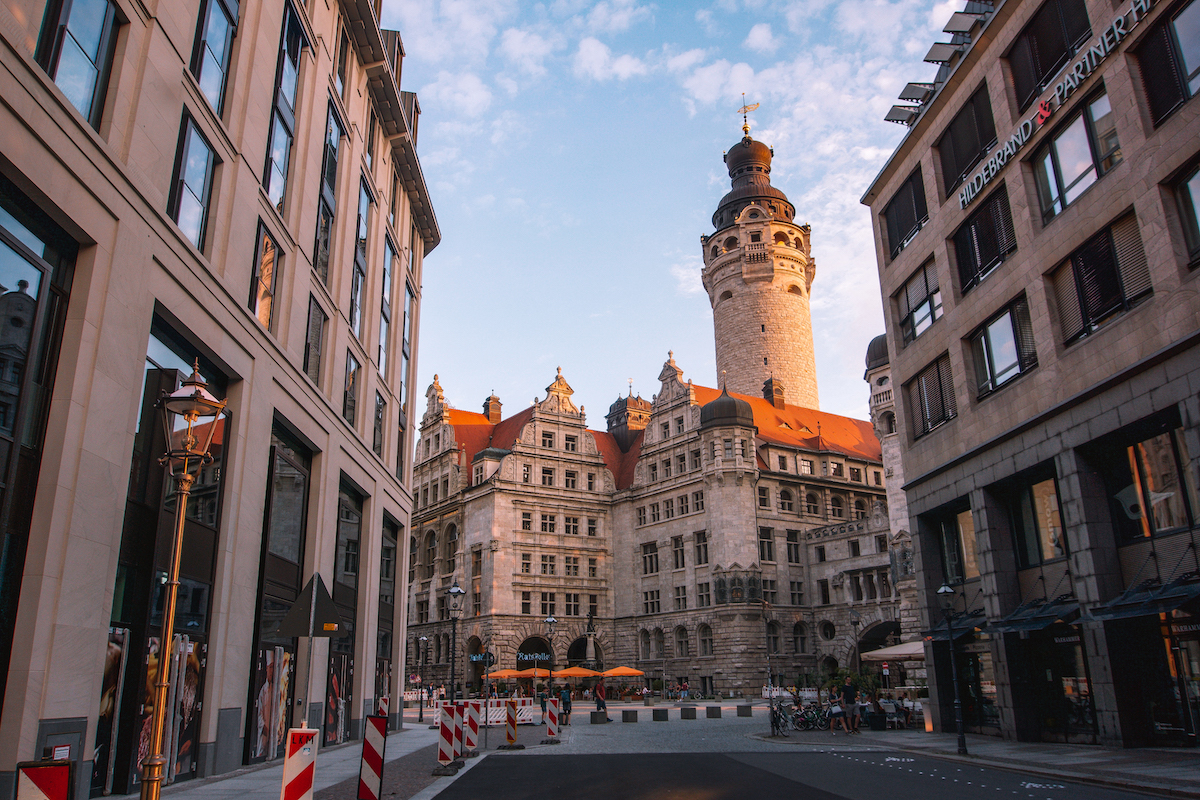
The free walking tour I took in Leipzig lasted about 2.5 hours and was essentially a crash course in the city’s history from the time it was founded to the present day.
Historically, Leipzig is one of Germany’s most important cities. It sits on the crossroad between two major trading routes, the Via Imperii and the Via Roma. These trading routes flourished during the time of the Holy Roman Empire, and to change from one route to another you had to pay fees in Leipzig. You can connect the dots to understand where most of Leipzig’s money was made.
Another interesting tidbit of Leipzig’s history I learned on the tour was its role in the classical music culture. Bach lived and worked in Leipzig for the 27 years leading up to his death, and during this time (and for years afterward) any composer worth his salt performed at least once in Leipzig.
No matter what aspects of history you’re most interested in, I highly recommend booking a spot on a walking tour of the city. You’ll be shocked at how important this “underrated” city really is!
Visit the Museum der Bildenden Künste (Museum of Fine Arts)
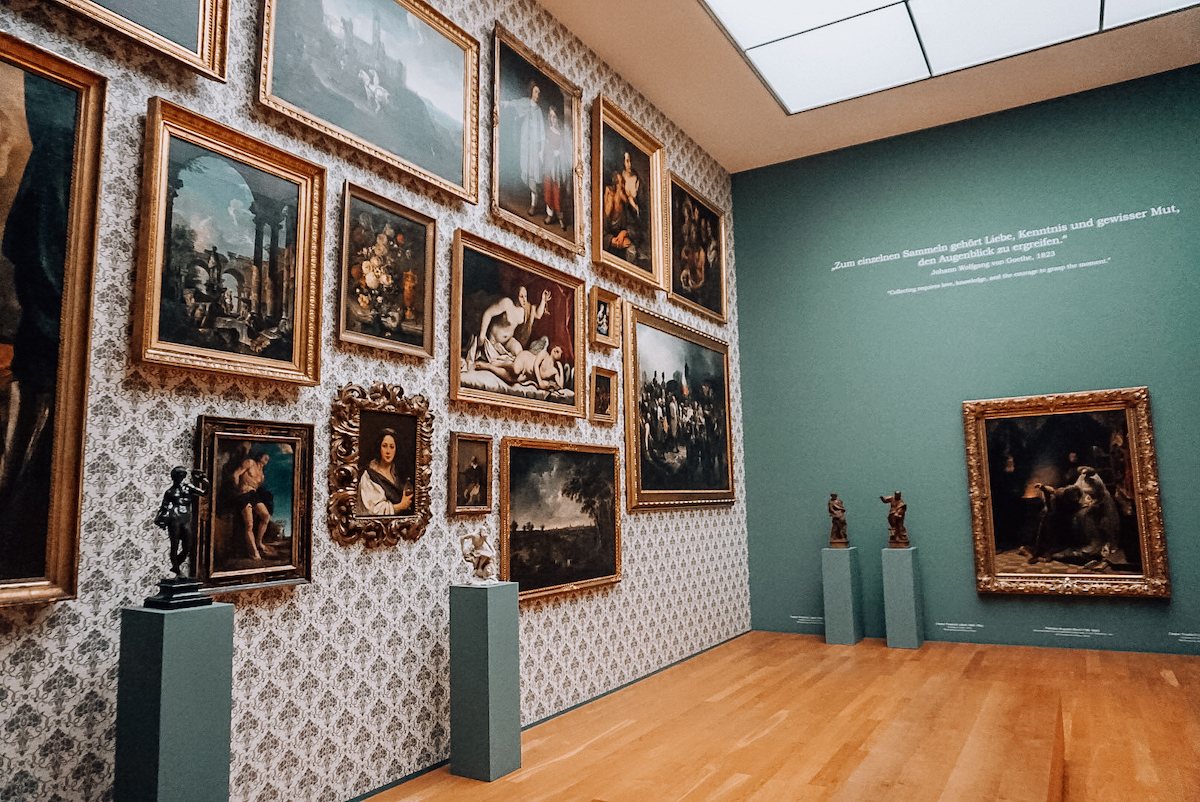
Calling all art lovers! The Museum of Fine Arts is one of the best-known tourist attractions in Leipzig, and it boasts one of the largest art collections in all of Germany, to boot — the museum has around 4,600 paintings from the Middle Ages alone! (A mere fraction of which are on display.)
The art museum has a little of everything; its collection spans over 500 years of art history, and they do a really good job of highlighting specific artists within their collection.
The art museum is big enough to spend upwards of three hours there, so plan your day accordingly!
See the Church Where Bach Worked for 30 Years (Thomaskirche)
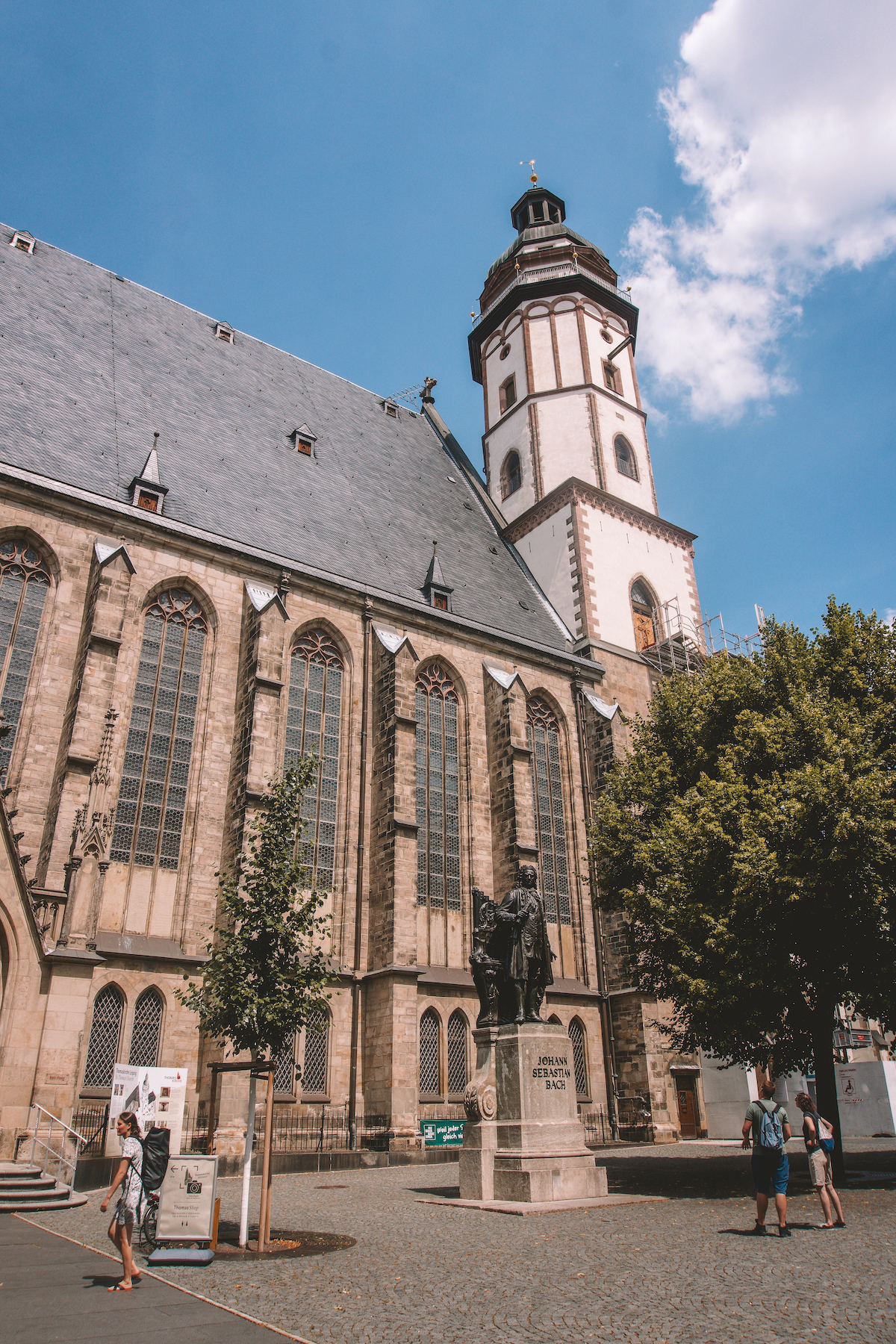
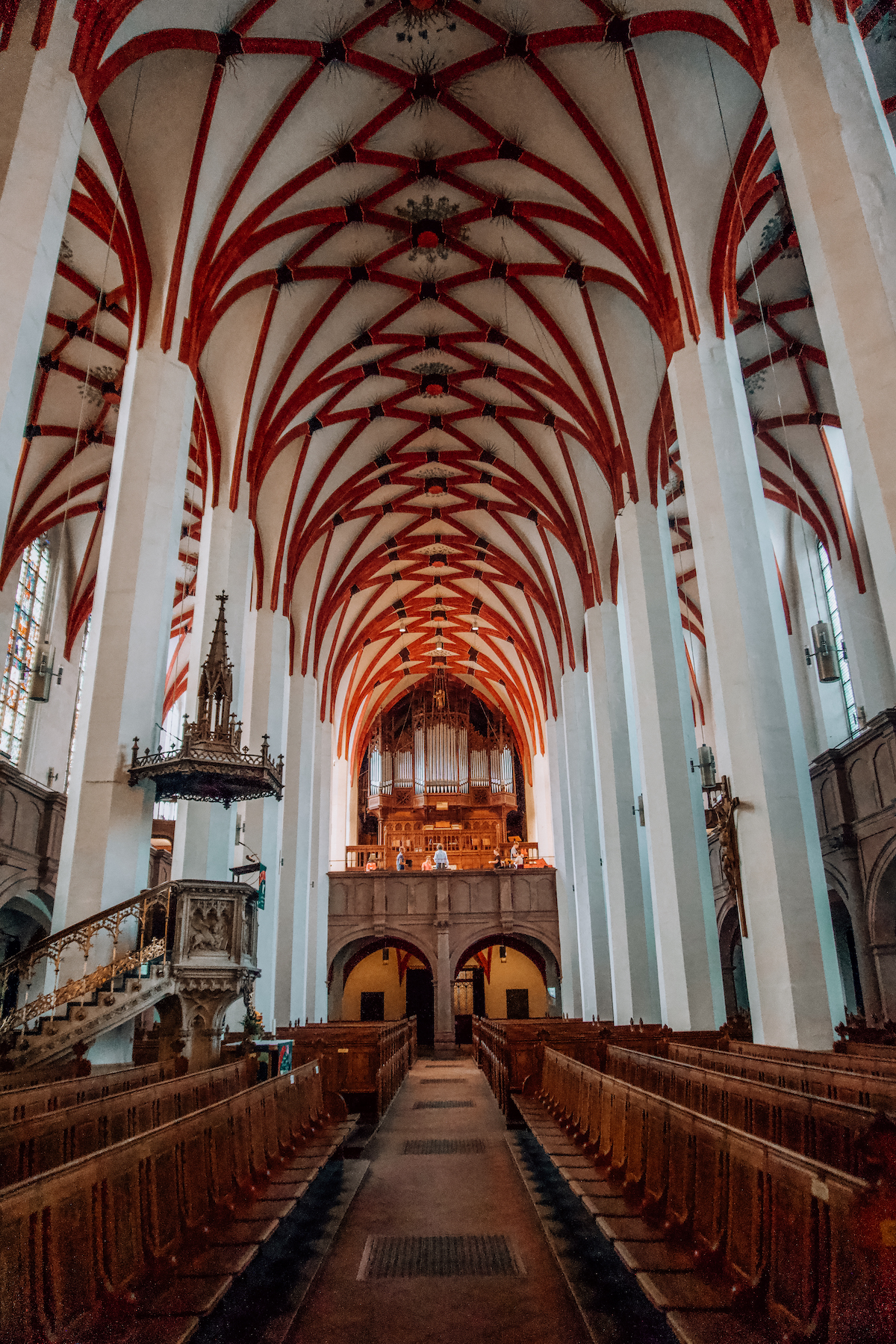
One of the most famous places in Leipzig, St. Thomas Church is where Johann Sebastian Bach worked for almost 30 years before his death in 1750. During his time in Leipzig, Bach wrote some of his most famous works, such as the St. Matthew Passion.
St. Thomas Church was badly damaged by Allied bombing during World War II, but it’s been beautifully restored. It’s well worth visiting this historic church — if you’re lucky, you’ll stumble in while the world renowned St. Thomas Boys’ Choir is practicing!
I happened to visit the church right when they began rehearsal, and I was blown away by their singing. You’d never guess that the oldest boys were just 18 years old just by hearing them sing.
Tip: Leipzig hosts an annual Bach Festival in June, so plan your visit to Leipzig accordingly if you’re a fan of classical music!
See the Church Where the Monday Demonstrations Took Place (Nikolaikirche)
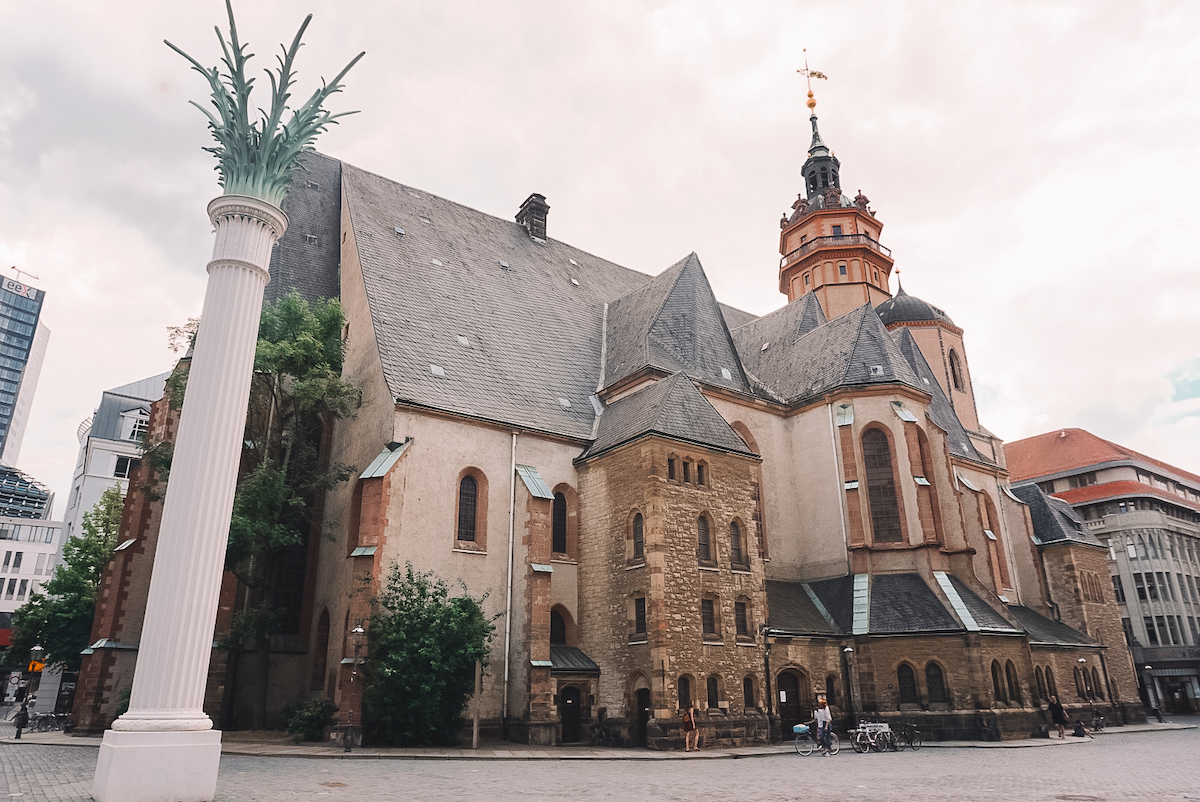
Another must-see Leipzig church is the St. Nicholas Church. Construction on the church began in 1165, and, like many old churches, it’s been renovated many times.
St. Nicholas Church is best known for being the site of the Monday Demonstrations between 1989 and 1991. During this time, people would gather outside the church to pray for peace and protest against the government of the German Democratic Republic. The Leipzig protests garnered the most attention worldwide, but many cities in Germany participated in the Monday Demonstrations.
In addition to its fascinating role in the demonstrations, St. Nicholas Church is just plain beautiful. The interior is painted in shades of sage green and light pink — an unlikely combination in a place of worship, but it makes for an ethereal ambiance.
Visit the Museum in the Altes Rathaus (Old Town Hall)
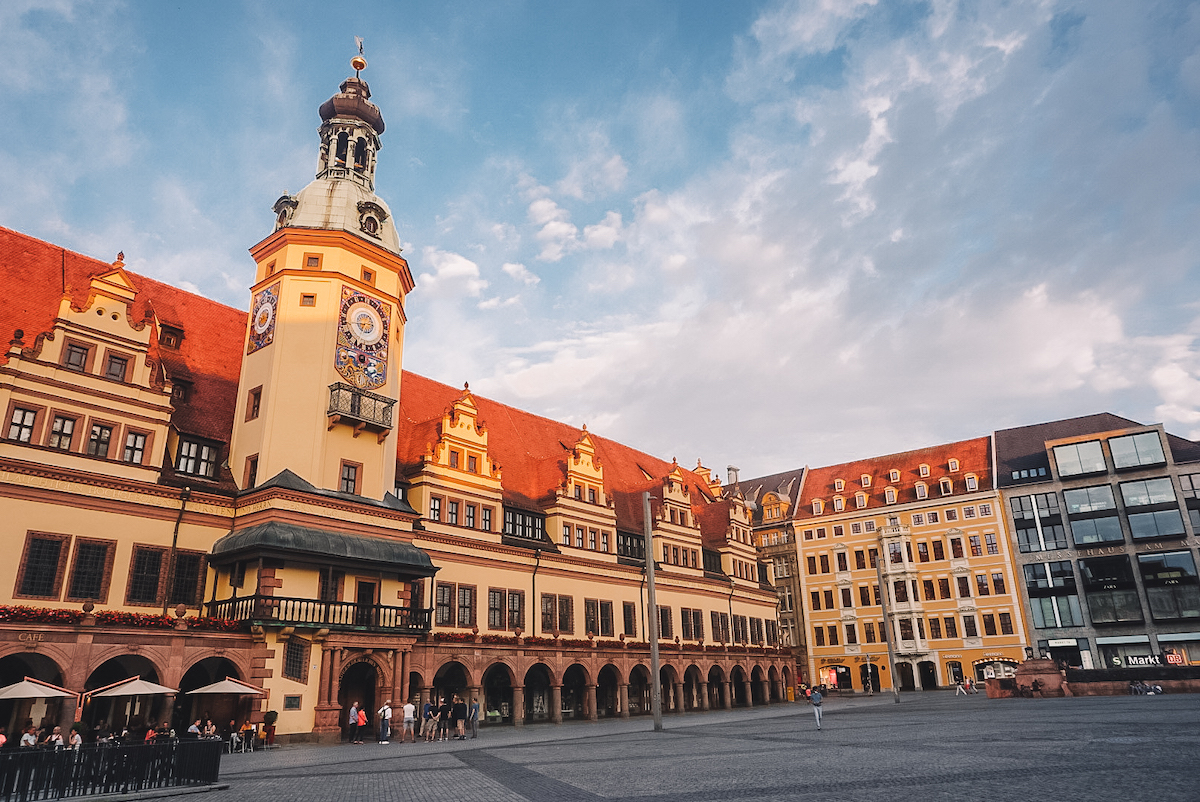
It’s impossible to miss the Old Town Hall in Leipzig’s city center. The Renaissance building looks like something from a fairy tale, and it’s now home to the museum of the city of Leipzig.
The museum walks you through Leipzig’s complete history and highlights key moment’s in the city’s history that shaped it into the place it is today. Most of the rooms have been refurbished to accommodate the exhibits, but some rooms were left as is so you can get a sense of what the Old Town Hall looked like when it was used for governmental purposes.
Tip: Give yourself at least 2.5 hours to explore the museum. There are two large levels to go through, and there’s a ton of information to digest while you’re there.
Visit the Völkerschlachtdenkmal (Monument to the Battle of the Nations)
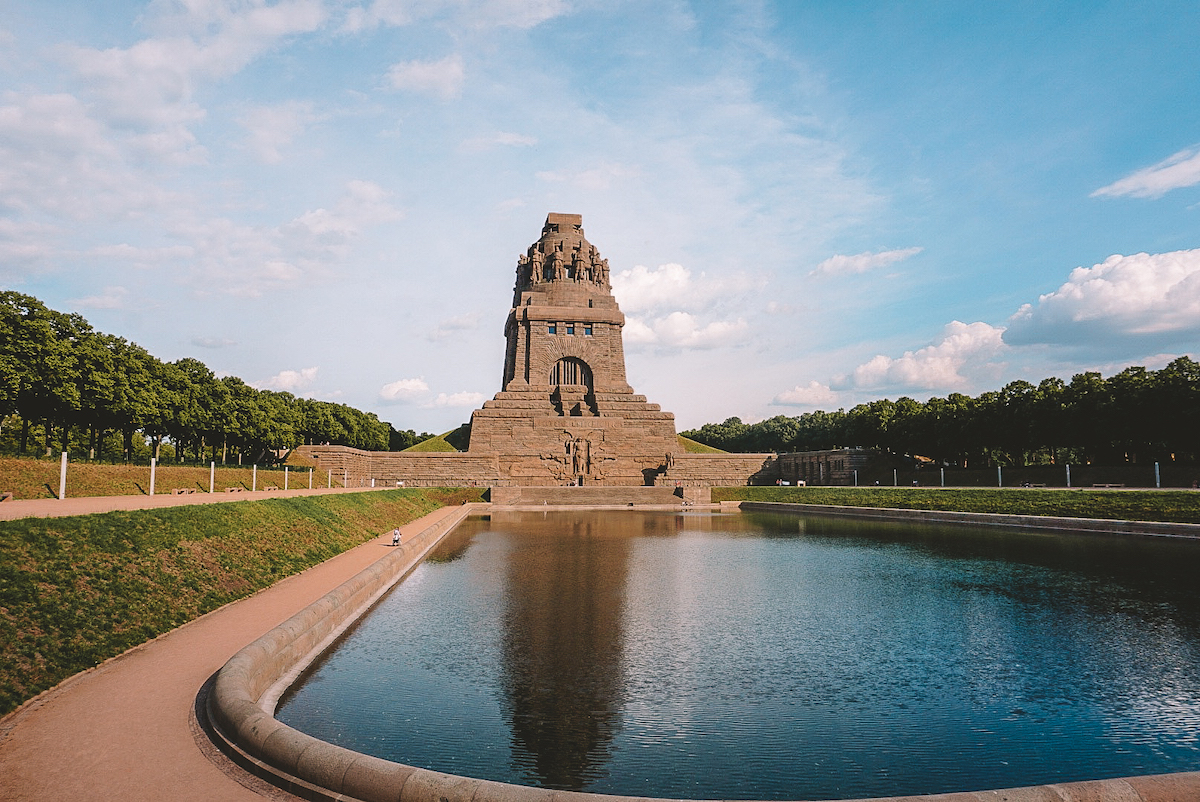
The Völkerschlachtdenkmal, or the Monument to the Battle of the Nations, was built in 1913 to commemorate the 100-year anniversary of the defeat of Napoleon at Leipzig and sits on the site of the former battlefield.
In front of the memorial is the “Lake of Tears,” which is a large reflecting pool. You can pay to climb up the 91-meter tower for a view of Leipzig from above.
During WWII, Hitler often used the monument as a venue for his party meetings in Leipzig. So, know that even if you don’t want to pay to enter the memorial to see the view from the top of the tower, the layers of historical significance at this memorial site make it well worth visiting regardless.
The memorial is outside the city center, but it’s one of the top things to do in Leipzig!
Explore the Südfriedhof (Cemetery)
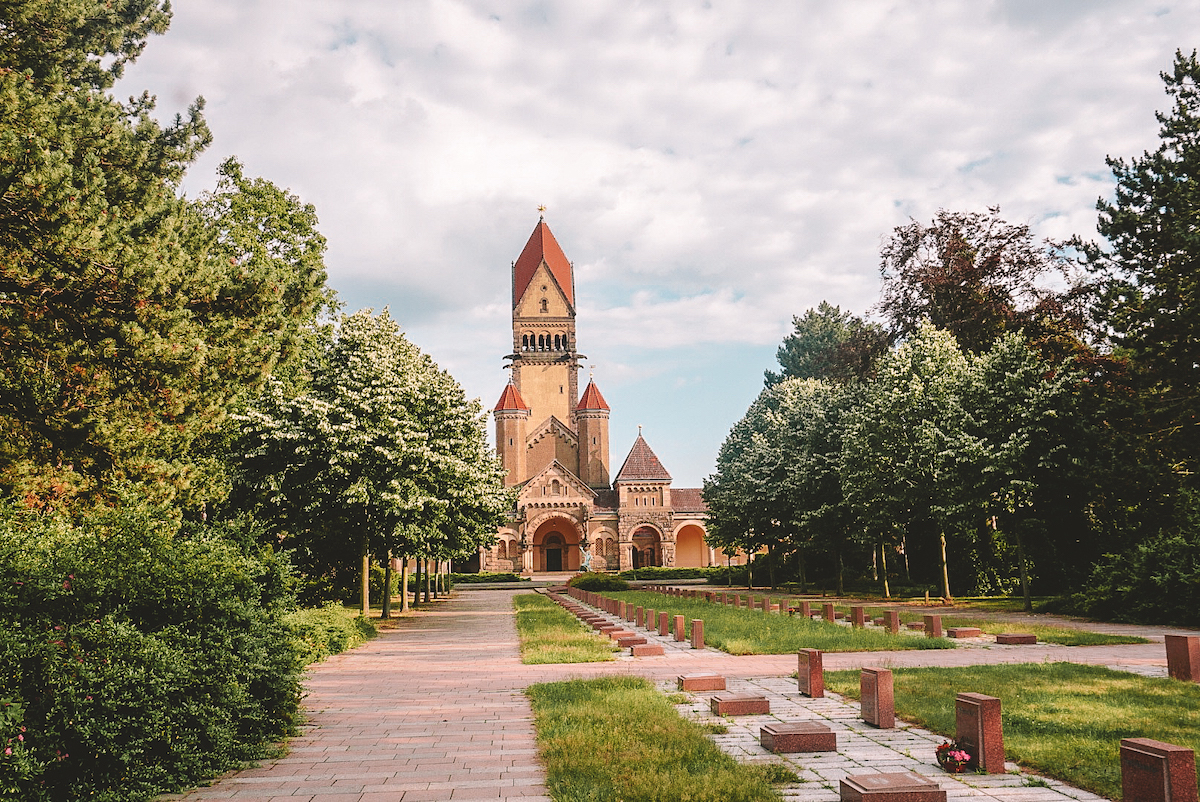
Just behind the Monument to the Battle of the Nations is the Südfriedhof, or South Cemetery. Established in 1979, it’s the largest cemetery in Leipzig.
Walking through the front gates of the Südfriedhof, you wouldn’t immediately know it’s a cemetery. The grounds are extensive and almost park-like in appearance, and there’s a beautiful crematorium in the center that looks like an old mansion at first glance.
The cemetery complex was modeled off of the Benedictine monastery Maria Laach in western Germany. Some of Leipzig’s most important sons and daughters are buried here, and many of the gravestones are works of art!
Tip: In May, the approximately 9,000 rhododendron bushes in the cemetery bloom and are spectacular to behold.
Visit the Grassi Museum
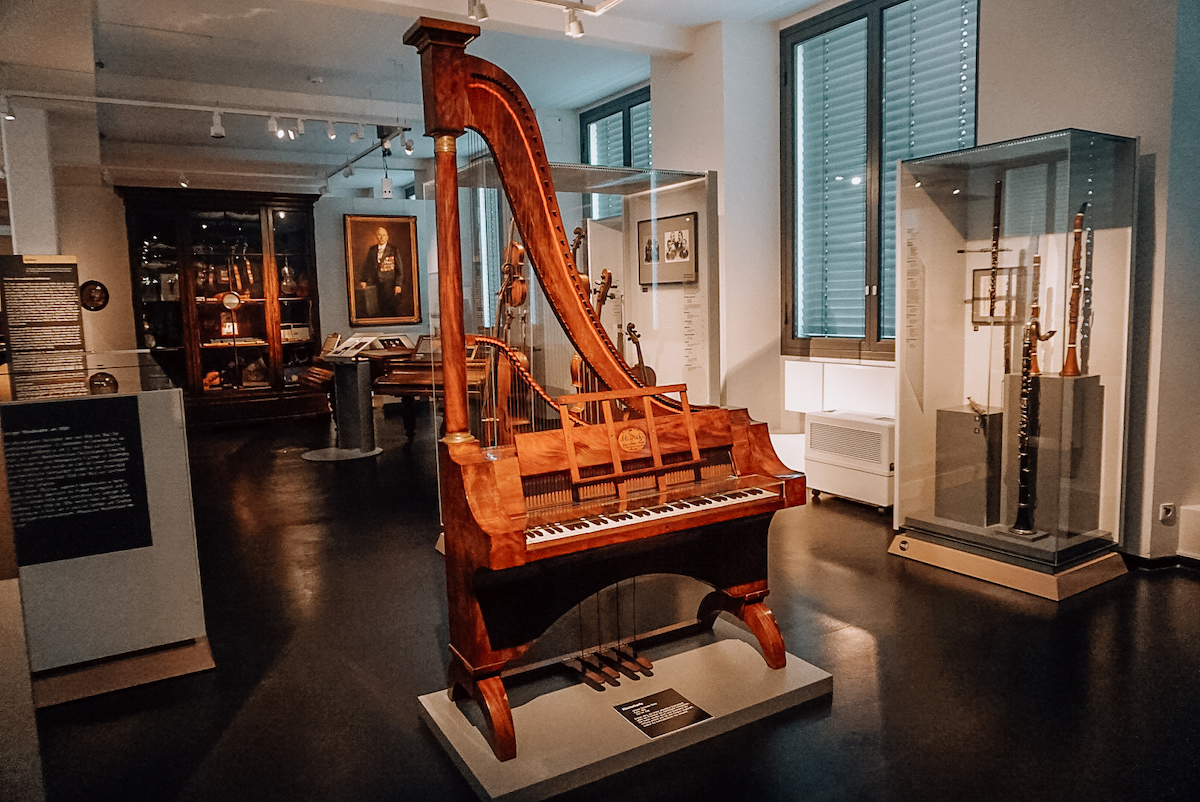
The Grassi Museum complex is housed in a lovely Art Deco-style building.
There are three smaller museums within the Grassi Museum complex — the Ethnography Museum, the Museum of Musical Instruments, and the Museum of Applied Arts. You can buy a ticket for one, two, or all three of the museums at a very fair price.
Each museum within the complex is on the smaller side, you likely need 90 minutes maximum to see each one.
Shop Inside the Historic Mädler Passage
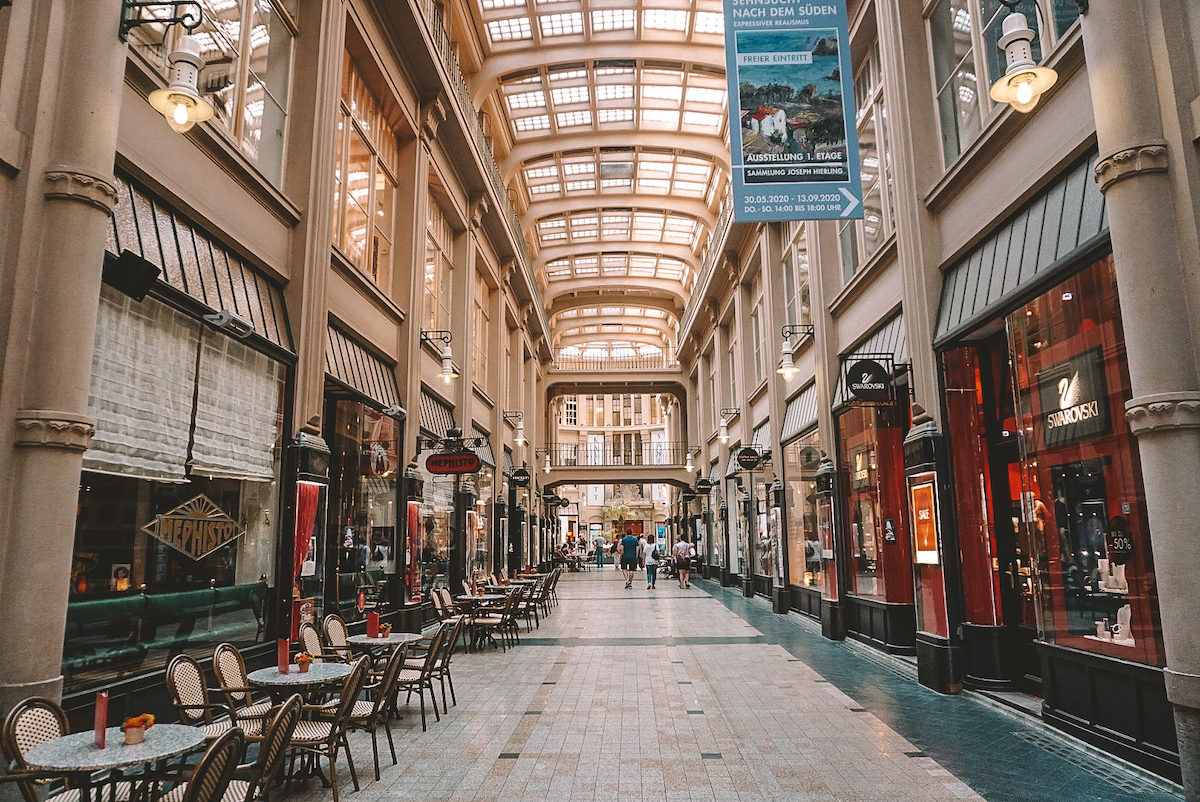
Wondering what else there is to see in Leipzig? In the heart of Leipzig’s Old Town is the stunning five-story Mädler Passage. The shopping arcade was commissioned by leather manufacturer Anton Mädler (hence the name) and was completed in 1914.
To build the massive arcade, the historic “Auerbachs Hof” (Auerbachs Courtyard) that had been there since 1530 had to be destroyed. However, the famous Auerbachs Keller — mentioned by Goethe in Faust — was preserved and can still be visited to this day!
The Mädler Passage was originally known for its porcelain, ceramics, and earthenware stores, but these days the stores cater more towards tourists and you can find a variety of shops inside.
Tip: Enter the Mädler Passage during Christmas market season to see the huge Christmas tree erected inside of it.
Visit Lovely Augustusplatz
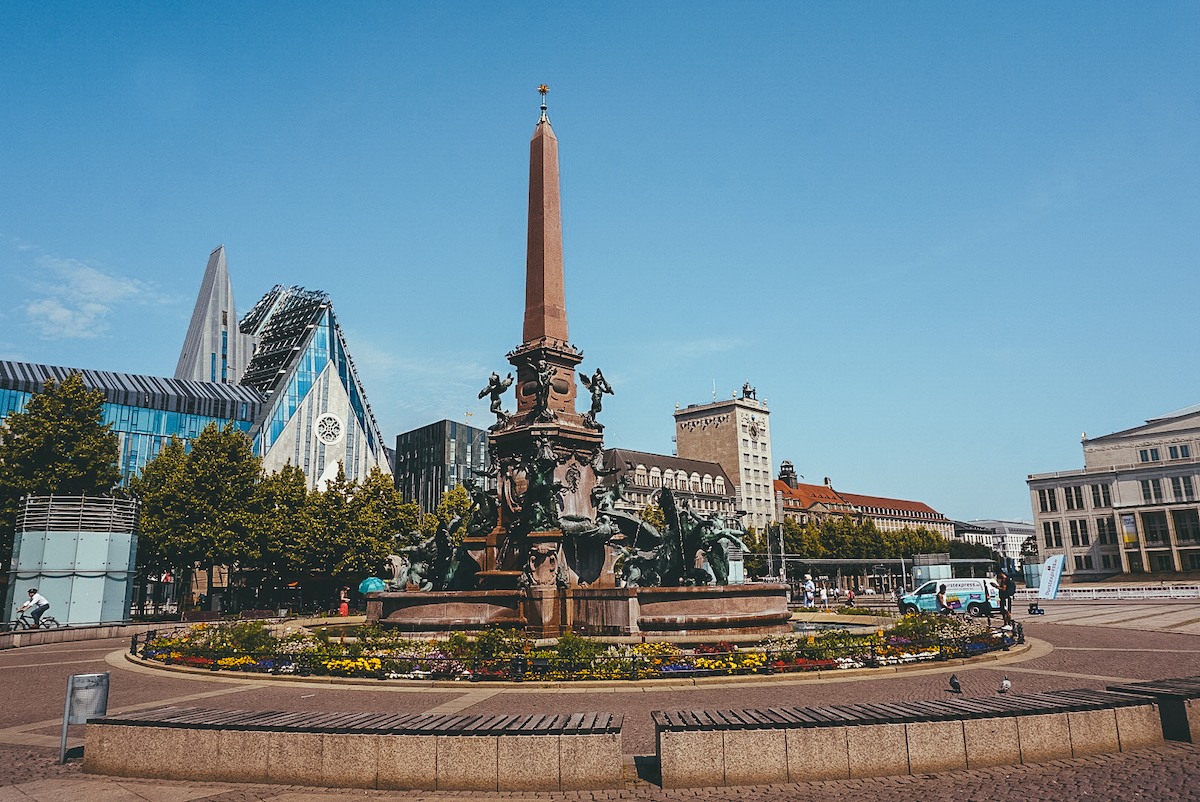
The 18th century Augustusplatz boasts some of the top cultural attractions in Leipzig. These include:
- Leipzig Opera House – opened in 1960 and seats around 1,300 people.
- Gewandhaus — a concert hall and home of the Leipzig orchestra. This is actually the third Gewandhaus that’s been built in Leipzig, but Felix Mendelssohn Bartholdy, Arthur Nikisch, and Wilhelm Furtwängler all conducted within the previous iterations of this building.
- Das Paulinum — the assembly Hall and university church of the University of Leipzig.
- City-Hochhaus — the highest office building in Leipzig at 142.5 meters tall. You can go to the top of this high rise for a panoramic view of the city (costs 4 Euros).
And, of course, you can’t miss the beautiful Mende Fountain (Mendebrunnen) when you’re at Augustusplatz! The fountain sits in the center of the square and dates back to the 1880s. Many of the city’s walking tours start here, so it’s a good landmark to know in advance!
Step Back in Time at the Naschmarkt
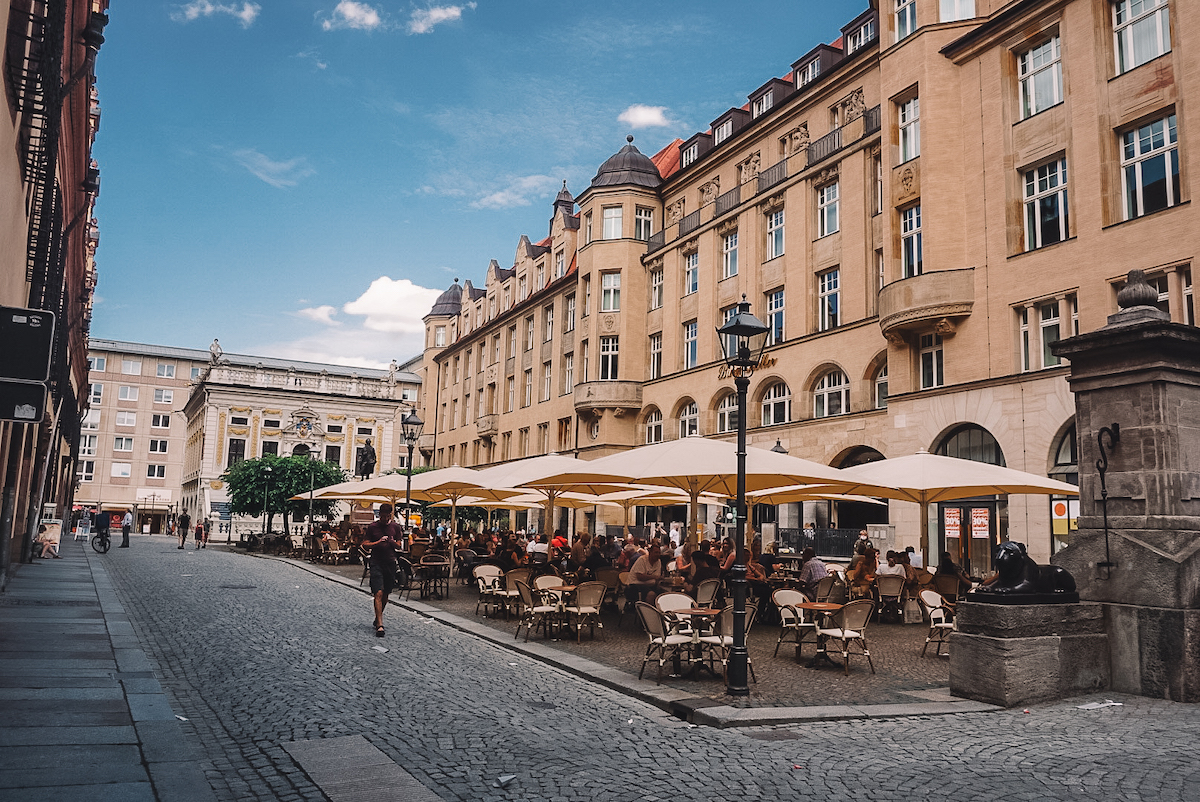
Tucked away behind the Old Town Hall is the Naschmarkt. It’s a pretty little square that was laid out in the 1550s; walking around it feels like you’re stepping back into Old Leipzig.
At the far end of the square is the Old Stock Exchange, built in the baroque style (today only used for events). And it’s impossible to miss the Goethe Monument (built in 1903) or the Lion Fountain (1918) — both of which are key features of the square.
Indulge in Specialty Coffee at Kaffeehaus Riquet
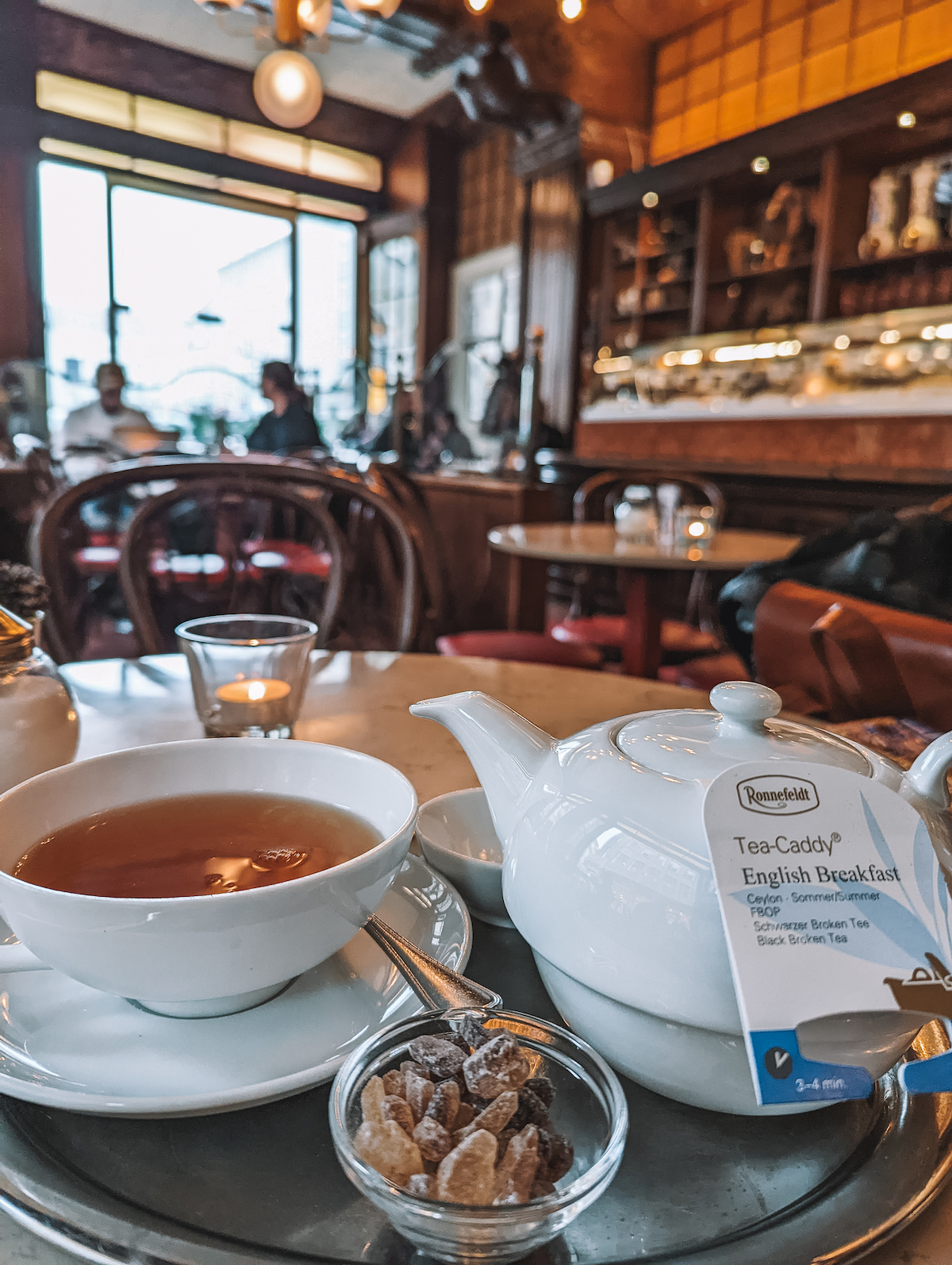
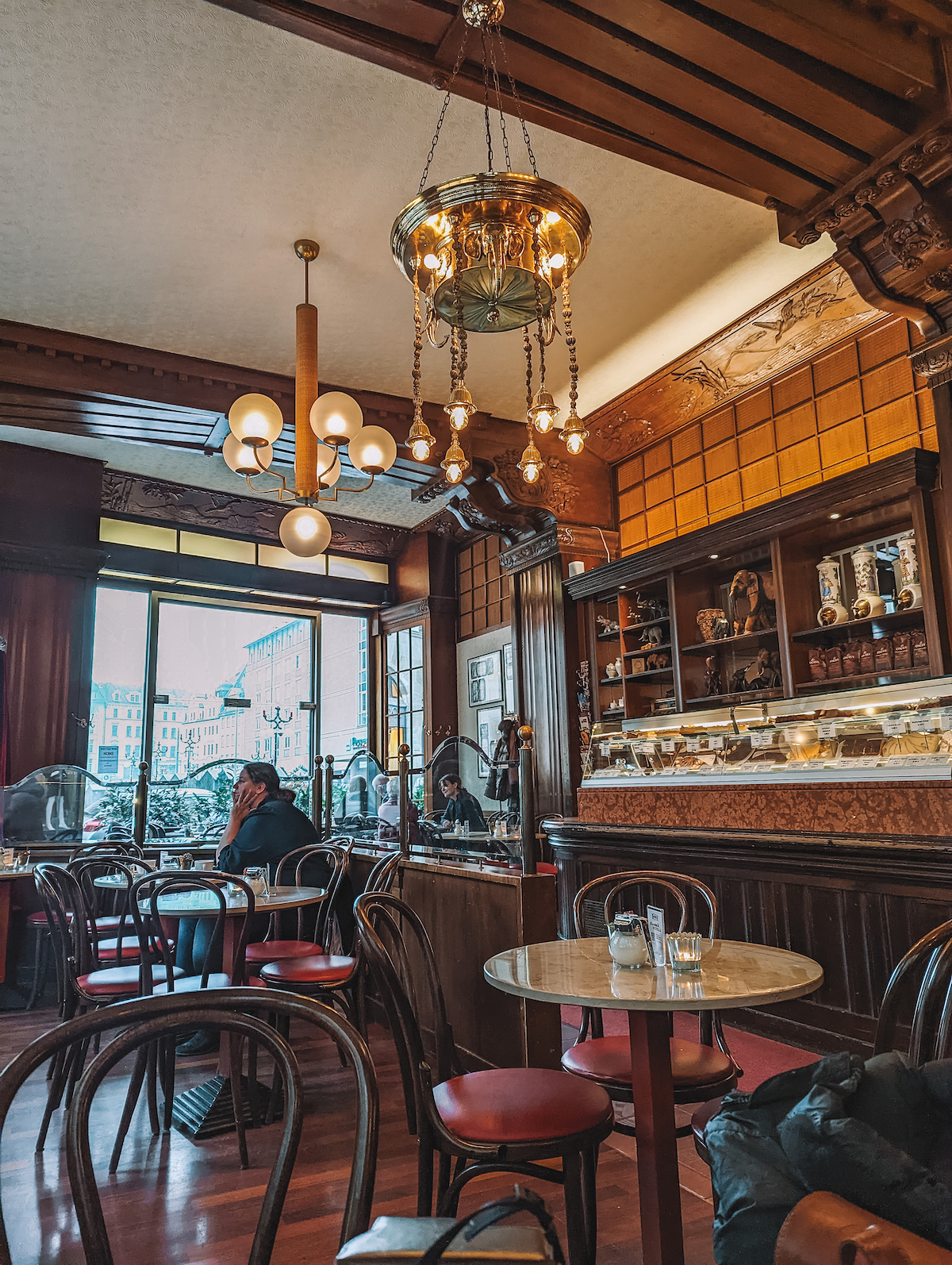
Kaffeehaus Riquet is a charming cafe with an Old World flair that’s located in the heart of Leipzig. The coffee house is the last remnant of Riquet & Co., which was an import business founded in 1745 that specialized in tea and coffee.
The company eventually opened a coffee bar, and they began manufacturing chocolate as well. (It’s said that the German writer and philosopher Goethe loved Riquet chocolate so much that he always traveled with it!).
The Riquet coffee house is one of my personal favorite places to visit in Leipzig, and I make a point to return each time I’m in the city.
The exterior of the coffee house is loosely Asian-inspired with its pagoda roof and life-sized copper elephants flanking the front door (the Riquet trademark!) — but it’s not historically accurate in the slightest. The interior of the coffee house has retained its lush Art Nouveau style. Your morning coffee has never looked this glamorous!
Bonus: Visit the Leipzig Christmas Market!
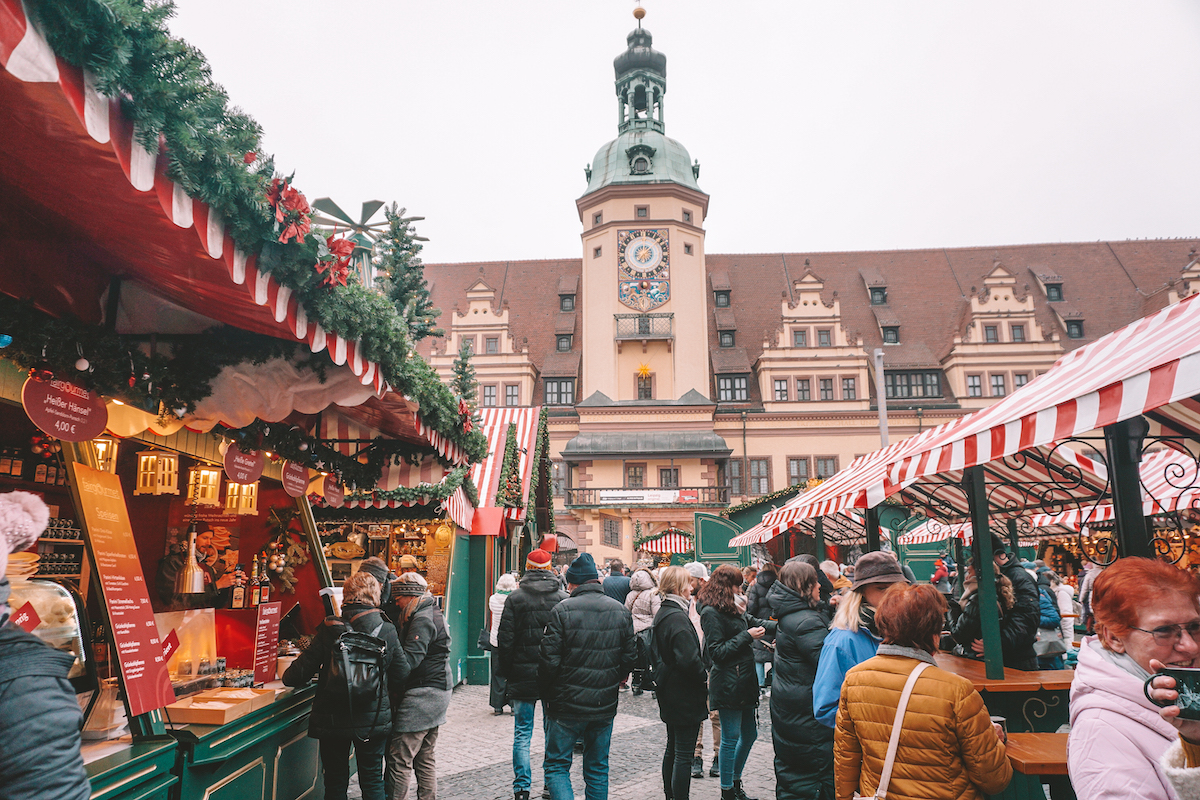
The Leipzig Christmas market is often overshadowed by the larger and better-known markets in Berlin and Dresden, but it’s well worth visiting!
The entire city center is transformed into a Christmas wonderland at the end of November, and the Leipzig Christmas Market remains in full swing until the holiday. There are a number of smaller markets scattered throughout the city, but the main market in front of the Old Town Hall is the best by far.
Be sure to read my full guide to the Leipzig Christmas markets for more details and lots more photos.
Even More Things to Do in Leipzig
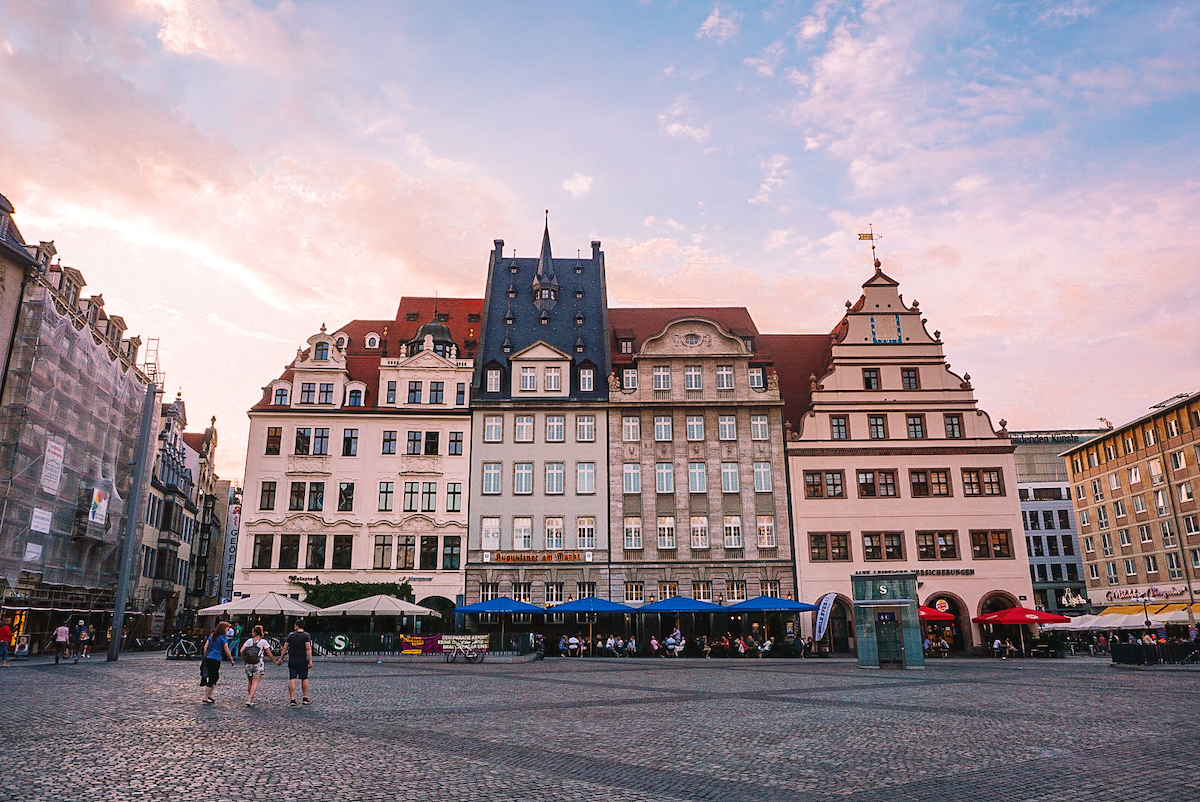
Even after multiple trips to Leipzig, I still haven’t seen and done all the things the city has to offer. Below are some additional things to do in Leipzig that remain on my personal bucket list, but that I’ve NOT yet visited.
- Bach Museum — An interactive museum dedicated to the life and work of Johann Sebastian Bach, who lived in Leipzig for nearly 30 years.
- Mendelssohn House — Felix Mendelssohn Bartholdy is yet another famous composer who called Leipzig home. This museum is dedicated to his life and work.
- Panometer — A top tourist attraction in Leipzig (how have I not been yet?!). It’s a former gas storage tank that’s been transformed into an exhibition space for 360º panoramas by artist Yadegar Asisi. I’ve seen his work in Berlin, and the panoramas are incredible!
- Leipziger Baumwollspinnerei — A former cotton mill-turned art and gallery space.
Only Have 1 Day in Leipzig? Here’s What You Should Do
Unsure what to do in Leipzig in a day? Here’s my proposed itinerary:
- Caffeinate at Riquet Kaffeehaus before starting your day.
- See the quaint Naschmarkt.
- Admire the Marktplatz in front of the Old Town Hall.
- Visit the Museum of the City of Leipzig to read about the city’s history.
- See St. Thomas’ Church where Bach worked for nearly 30 years.
- Walk to Augustusplatz (you’ll pass the Mädler-Passage along the way!).
- From Augustusplatz, take the tram to the Monument to the Battle of the Nations.
- Take the tram back to the central train station.
Is Leipzig Worth Visiting? Final Thoughts
With so many things to do and see in Leipzig, it’s a wonderful place to visit either as a day trip from Berlin or Dresden or as a weekend getaway in its own right. If you have any questions about visiting Leipzig, leave me a comment below!
Don’t forget to follow me on Instagram to keep up with my daily adventures in Berlin and beyond!

Leave A Reply!